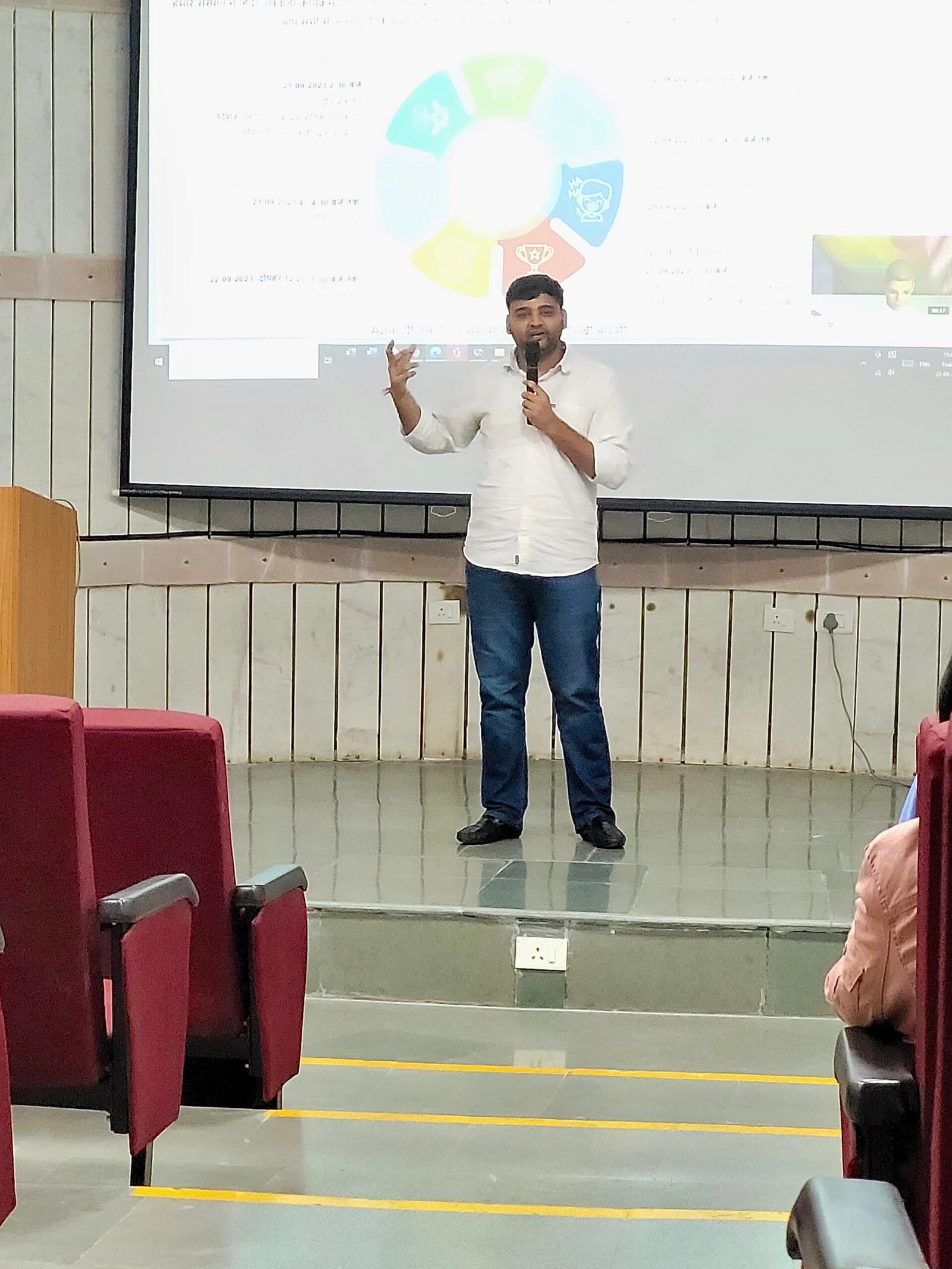“नमस्ते” (Namaste), ladies and gentlemen, esteemed readers. As I stand before you today, I invite you to embark on a journey—a journey that began with a curiosity about India’s history and culture. This voyage unfolded through the intricate tapestry of language, culture, and unity in our diverse nation.
In 2010, my exploration into India’s historical background took root with my participation in “Bharat Ko Jano,” a national-level quiz competition. What transpired from that point was an expedition through time and self-discovery, an exploration that led me to comprehend the rich and complex relationship between language and our identity as Indians.
During the Hindi Pakhwada celebration at the National Brain Research Centre in Manesar, I had the privilege to share this journey in Hindi. Today, I bring you a translated account, where we will explore the significance of linguistic diversity, the power of language to unite, and the lessons learned on my path from ‘Bharat Ko Jano’ to Hindi Pakhwada.
So, let’s delve into this voyage together—a journey celebrating unity in diversity, where language is the bridge that connects hearts and minds.
A Personal Journey of Discovery
Today, I stand/write before you to share a journey—a journey that began in 2010 when I was just starting to explore the rich tapestry of India’s history and culture. It all began with my participation in a National Level quiz competition called “Bharat Ko Jano.” Little did I know that this journey would profoundly shape my perspective on language, culture, and unity in our diverse nation.
Around that time, my curiosity about India’s historical background led me down a path of discovery. Through “Bharat Ko Jano” and subsequent events, I embarked on a quest to understand India’s social, historical, political, and economic facets. As I delved deeper into this exploration, my thirst for knowledge grew, and so did my social and political consciousness.
During this time, social media was on the rise, and it became a platform for various social and political organizations to propagate their ideas. I became immersed in these discussions and debates. I also had the privilege of listening to enlightening lectures by Rajiv Dixit Ji and the patriotic poems of Hindi poets like Ramdhaari Singh Dinkar, Nirala, Hariom Pawar etc. All of these experiences deepened my admiration for our language, culture, religion, and nation.
Hindi, Hindu, and Hindustan : A Transformative Phase
This phase of my life could be encapsulated in a single phrase: “Hindi, Hindu, and Hindustan.” I had created an echo chamber around myself, where I consumed information that reinforced my beliefs. Anything contrary to these ideas seemed wrong to me at the time. My love for Hindi reached such heights that I began using it as my signature, both figuratively and literally. My social media profiles proudly displayed my name in Devanagari script. All my posts were in Hindi, and I even attempted to finding or developing a mailing system using Devanagari script.
Challenging the Dominance of English
During this period, I took my passion for Hindi to another level. I began to openly challenge the use of the English language in my surroundings. In my school, where the rule was to communicate primarily in English, I decided to give a speech on the school stage in Hindi, despite it being scheduled to be in English. I was so committed to promoting Hindi that I even stoped giving attention to English that time and consequently, I scored the lowest marks in English language papers during my 12th board exams.
The Turning Point and the Bigger Picture
However, as time went on, I began to realize that my unwavering devotion to one language had inadvertently pitted me against other languages, much like how some Indian states, in their zeal to promote their regional languages, occasionally found themselves at odds with other languages. Just as I went against English in my love for Hindi, some regions became so engrossed in promoting their regional languages that it led to linguistic friction. This, in a country as linguistically diverse as India, can pose significant challenges.
India has celebrated its linguistic diversity, but it has also witnessed moments of division, protests, and agitation rooted in language differences. States have been formed based on linguistic lines, highlighting both the beauty and complexity of our linguistic landscape.
Promoting Language as a Unifying Force
I believe, this is where the government can play a pivotal role. While promoting a language as a unifying factor is essential, it should never be done in a way that imposes it upon people or regions. Language should be embraced willingly, as a tool that unites rather than divides. Hindi, as a potential unifying language, can play a significant role in bridging linguistic diversity. However, it’s crucial to promote it in a manner that encourages voluntary adoption for the sake of national unity.
Moreover, alongside promoting Hindi, we must also celebrate and promote our other regional languages. Embracing linguistic diversity should be at the heart of our language policy. It’s through this harmonious coexistence of languages that we truly reflect the spirit of India.
Conclusion
In conclusion, my personal journey has taught me the importance of striking a balance between promoting one’s language and respecting the linguistic diversity that enriches our nation. Just as I learned the value of appreciating multiple languages, I urge all of us to embrace the beauty of linguistic diversity in India. We should promote Hindi as a unifying language, not through imposition, but through encouragement and respect for linguistic diversity. Our nation’s unity doesn’t lie in suppressing languages but in celebrating them all.
Let us remember, our strength lies in unity, and language should be a bridge, not a barrier. Our linguistic diversity is our strength, and by harmoniously embracing it, we can create a united, culturally rich, and harmonious India. Jai Hind!
For a visual representation of this speech and a more immersive experience, you can watch the video of the speech on YouTube.
